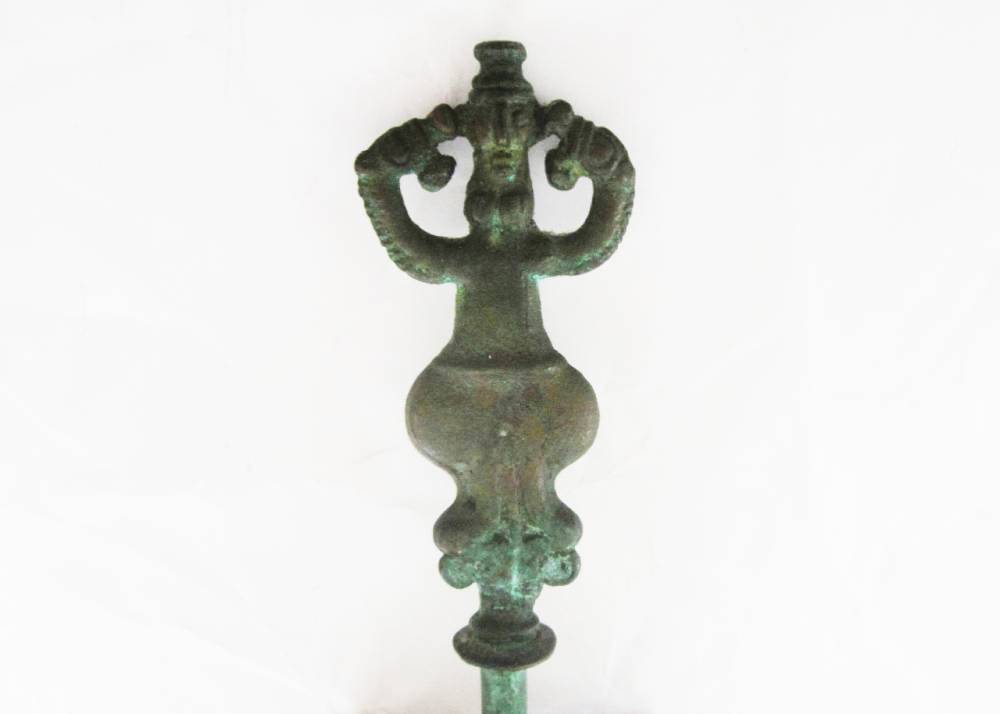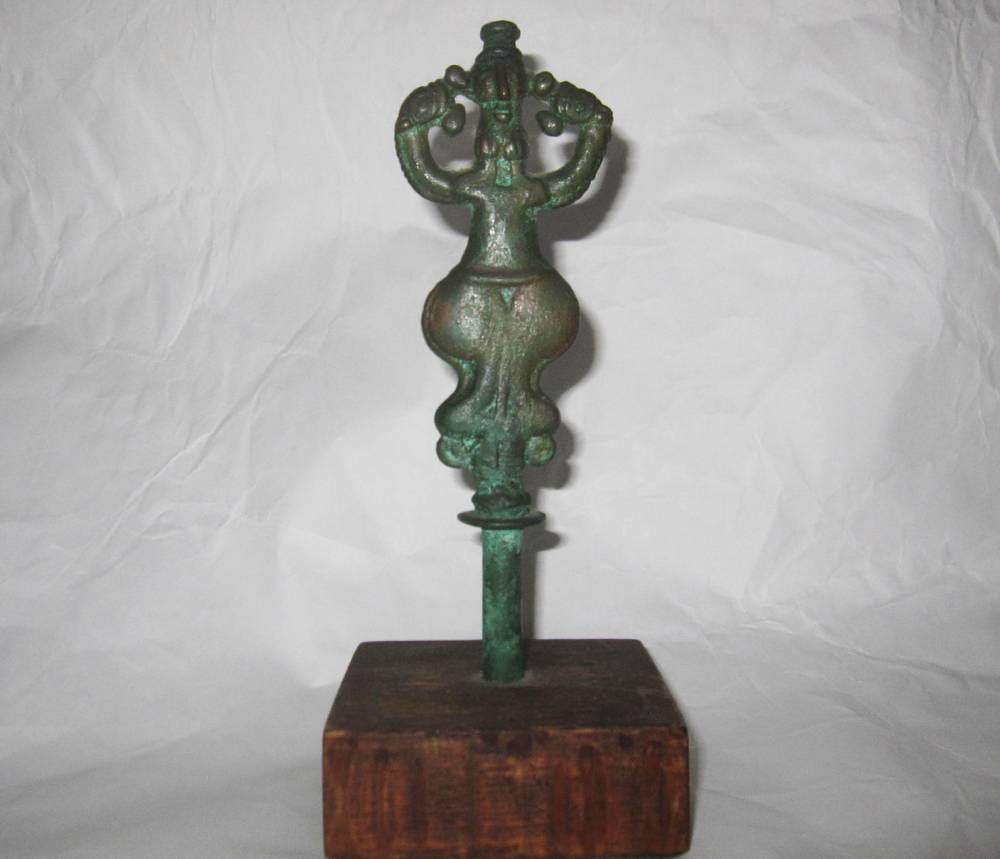Description
A bronze finial or standard top, which in ancient times would have been joined to a standard,
a pole or other support. The finial has the form of an anthropomorphic tube which on either
side depicts the stylized face of a human or – more likely – of a god, with an elongated nose,
large ears and large round eyes; On either side of the figure we see the gaping mouth of a
predator or a demonic creature, the throat of which the figure is holding in its hands.
Luristan, West Persia; Circa 1200-800 B C
Height: 19 cm including stand.
Luristan bronze objects such as this have been interpreted as deities, household cult figures,
totems, and talismans. Many were found in tombs and burial sites, but besides this fact there
is no real evidence for their meaning. It is also not known whether they had non-funerary functions.
Freud was intensely interested in the use of totems in ancient forms of religion. In Totem and
Taboo (1913) Freud applied psychoanalytic theories to the fields of anthropology, archaeology
and the study of religion.
Literature:
Houshang Mahboubian, The Art of Ancient Iran: Copper and Bronze (London, Philip Wilson Publishers, 1997), p. 125-163, nos. 105-167;
P.R.S. Moorey a.o., Ancient Bronzes, Ceramics and Seals: The Nasli M. Heeramaneck Collection of Ancient Near Eastern, Central Asiatic, and European Art (Los Angeles, Los Angeles County Museum of Art, 1981), p. 55;
P.R.S. Moorey, Catalogue of the Ancient Persian Bronzes in the Ashmolean Museum (Oxford, Clarendon Press, 1971), p. 140-160, nos.161-184, pls. 30-37, esp. p. 153 ff., nos. 175 ff.;
Phil Watson, Luristan Bronzes in Birmingham Museum and Art Gallery (Birmingham, Birmingham Museums & Art Gallery, 2011), p. 2-11, nos. 1-17;
Oscar White Muscarella, Bronze and Iron. Ancient Near Eastern Artifacts in the Metropolitan Museum of Art (New York, Metropolitan Museum of Art, 1988), p. 136-154.



